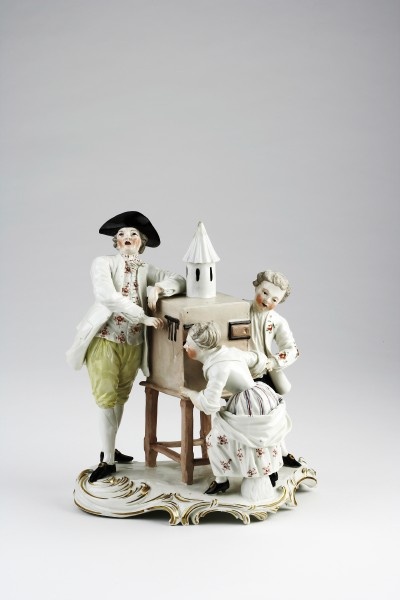Der Guckkasten, ein Bildmedium, bei dem mittels Linse und Spiegel die Illusion von Dreidimensionalität erzeugt wird, war eine der Jahrmarktsattraktionen des 18. Jahrhunderts. Er wurde im Zusammenhang mit Jahrmarktsdarstellungen zu einem Thema der französischen Genremalerei des Rokoko und fand als eigenständige Szene Eingang in die Porzellanplastik. Der Modelleur dieser Gruppe, Johann Friedrich Lück (1727–1797), war 1758 von der Porzellan-Manufaktur Meissen nach Frankenthal gekommen und führte dort Figuren im Stil des Rokoko ein.
Ankauf 1904. Ehemals Sammlung Bourgeois Frères, Köln.
en

